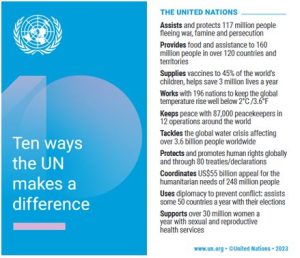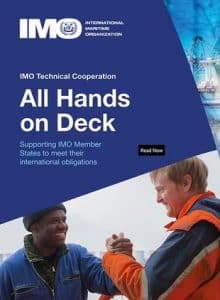New UN websites & publications
UN in General

English: https://www.un.org/en/situation-in-occupied-palestine-and-israel
French: https://www.un.org/fr/situation-in-occupied-palestine-and-israel
Spanish: https://www.un.org/es/situation-in-occupied-palestine-and-israel
The United Nations has played a significant role in addressing the enduring conflict between Israel and Palestine, and has been actively involved in seeking a peaceful resolution to the Israeli-Palestinian conflict. Over the years, the UN has facilitated peace talks, provided humanitarian aid, and supported initiatives aimed at fostering understanding and reconciliation between the two parties. UN Secretary-General António Guterres voiced grave concern over the on-going escalating conflict in Israel and Gaza, and stressed the need to prevent the violence from spreading into the wider region.
2023 UN Card
English: https://www.un.org/sites/un2.un.org/files/uncard_2023_e.pdf
French: https://www.un.org/sites/un2.un.org/files/uncard_2023_f.pdf
Spanish: https://www.un.org/sites/un2.un.org/files/uncard_2023_s.pdf
The 2023 edition of The UN Card brings an update to 10 actions of the UN that show in quantifiable terms how the daily work of the UN and its agencies affects the lives of people around the globe.
Political Declarations adopted at the 78th session of the General Assembly
- A/RES/78/1: Political Declaration of the High-Level Political Forum on Sustainable Development convened under the auspices of the General Assembly / Resolution adopted by the General Assembly on 29 September 2023
English, French & Spanish: https://undocs.org/A/RES/78/1 - A/RES/78/3: Political Declaration of the United Nations General Assembly High-Level Meeting on Pandemic Prevention, Preparedness and Response / Resolution adopted by the General Assembly on 5 October 2023
English, French & Spanish: https://undocs.org/A/RES/78/3 - A/RES/78/4: Political Declaration of the High-Level Meeting on Universal Health Coverage / Resolution adopted by the General Assembly on 5 October 2023
English, French & Spanish: https://undocs.org/A/RES/78/4 - A/RES/78/5: Political Declaration on the High-Level Meeting on the Fight Against Tuberculosis / Resolution adopted by the General Assembly on 5 October 2023
English, French & Spanish: https://undocs.org/A/RES/78/5
Stories from the UN Archive – A breathtaking collection of major moments of UN history
Video Link: https://youtu.be/aLL2JkNAX5A

The series includes:
- Founding of the United Nations 1945
- Jane Goodall: Messenger of Peace
- History’s Biggest Moments From the UN Archive
- A Mideast Mediator’s Murder in Jerusalem 1948
- Myth or Reality: Khrushchev and the Shoe-Gavel Mystery
- 1st Woman President of the United Nations General Assembly: Vijaya Lakshmi Pandit
- First Session of UN General Assembly – 10 January 1946
Economic Growth and Sustainable Development
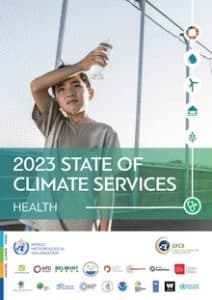
https://public.wmo.int/en/our-mandate/climate/state-of-climate-services-report-for-health
As the world warms at a faster rate than at any point in recorded history, human health is on the frontline. Climate change threatens to reverse decades of progress towards better health and well-being, particularly in the most vulnerable communities. Scientific know-how and resources can help redress the balance, but are not sufficiently accessible or utilized, according to a new multi-agency report coordinated by the World Meteorological Organization (WMO). WMO’s annual State of Climate Services report this year focuses on health. It highlights the need for tailored climate information and services to support the health sector in the face of more extreme weather and poor air quality, shifting infectious disease patterns and food and water insecurity.

English: https://www.unep.org/resources/adaptation-gap-report-2023
French: https://www.unep.org/fr/resources/rapport-2023-sur-le-deficit-de-ladaptation-au-climat
Spanish: https://www.unep.org/es/resources/informe-sobre-la-brecha-de-adaptacion-2023
Progress on climate adaptation is slowing on all fronts when it should be accelerating to catch up with rising climate change impacts and risks, according to a new United Nations Environment Programme (UNEP) report. Released ahead of the COP28 climate talks taking place in Dubai, United Arab Emirates, the Adaptation Gap Report 2023: Underfinanced. Underprepared – Inadequate investment and planning on climate adaptation leaves world exposed finds that the adaptation finance needs of developing countries are 10-18 times as big as international public finance flows – over 50 per cent higher than the previous range estimate.

https://doi.org/10.58337/PHDP8559
On 26 October 2023 Audrey Azoulay, UNESCO’s Director-General, unveiled a report arguing that the continent has all it takes to become one of the next global fashion leaders, if public decision-makers offer greater support to all those who work in the sector and play a role in the fashion ecosystem. The UNESCO analysis shows that the continent holds all the cards to become one of the next world fashion leaders. It is a major producer of raw materials – 37 out of 54 countries produce cotton -, an exporter of textiles to the value of $15.5 billion a year, and an importer of textiles, clothing and footwear to the value of $23.1 billion a year. There is a growing consumer trend on the continent for fashion Made-in-Africa, particularly among young people – the under-25s account for 50% of the continent’s total population – and among the burgeoning middle class – which already make up more than 35% of the population – opening up new consumer markets. Africa is also experiencing very rapid growth in the digital sector, which is facilitating intra-African trade and the emergence of young talent. As evidenced by the 32 Fashion Weeks held each year, Africa is also brimming with talent in the fields of haute couture, crafts and clothing. A 42% increase in demand for African haute couture is expected over the next 10 years.
All Hands on Deck: Supporting IMO Member States to meet their obligations (IMO)
https://www.imo.org/en/MediaCentre/Pages/WhatsNew-1975.aspx
A new IMO brochure details key priorities and the Organization’s programme of technical assistance to support Member States, particularly those categorized as Small Island Developing States (SIDS) and Least Developed Countries (LDCs). More than a third of IMO’s 175 Member States are classified as SIDS or LDCs.
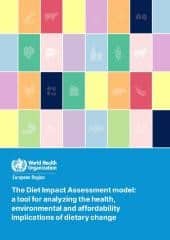
https://www.who.int/europe/publications/i/item/WHO-EURO-2023-8349-48121-71370
This manual describes the Diet Impact Assessment (DIA) model – a new interactive modelling tool for analysing the health, environmental and affordability implications of diets and dietary change. The tool enables countries to analyse user-specific scenarios of dietary change, and to estimate the health, environmental and cost burden of each scenario in terms of diet costs, avoidable deaths, changes in resource use and compatibility with global environmental targets, including those associated with food-related greenhouse gas emissions, land use, water use and fertilizer application. The tool was commissioned by the WHO Regional Office for Europe and is based on analytical frameworks developed by Marco Springmann and colleagues. This manual outlines use of the tool and its scientific basis.
Europe and Central Asia Economic Update, Fall 2023: Sluggish Growth, Rising Risks (World Bank)
https://openknowledge.worldbank.org/handle/10986/40389


https://www.worldbank.org/en/region/eca/publication/europe-future-of-work
This report examines the relationship between technology, economic growth, and equity. By analyzing the impact of technological progress on firm-level productivity, market concentration, and outcomes for workers with different education levels—we can gain insight into technology’s effects on the European Union labor markets. The report demonstrates that while innovation and technological advances have increased productivity in Europe, they have also led to a rise in income inequality. Such technological advances promote market concentration, decreasing the share of total national income that goes to labor. In addition, individuals with university degrees benefit more from technology adoption in labor markets, while less-educated workers are more vulnerable to being displaced.
Global Accelerated Action for the Health of Adolescents (AA-HA!): Guidance to support country implementation; 2nd edition (WHO)
https://www.who.int/publications/i/item/9789240081765
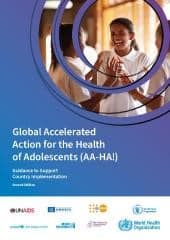
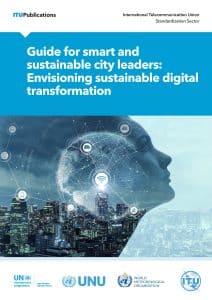
https://www.itu.int/cities/publications/ssc/
The Guide for smart and sustainable city leaders aims to provide city leaders with practical guidance on how to plan, develop, and implement smart and sustainable city initiatives. The document covers various aspects related to smart and sustainable cities, including the role of technology, governance, policy frameworks, financing, and stakeholder engagement. It emphasizes the importance of leveraging digital technologies to address urban challenges and improve the quality of life for citizens. The guide offers a step-by-step approach to help city leaders assess their current situation, set goals, develop strategies, and monitor progress towards becoming a smart and sustainable city. It provides case studies, best practices, and recommendations based on experiences from different cities around the world. Overall, this document serves as a comprehensive resource for city leaders who are interested in transforming their cities into smart and sustainable environments, leveraging technology and innovation to create more efficient, inclusive, and environmentally friendly urban spaces.
The Impact of Disasters on Agriculture and Food Security 2023: Avoiding and reducing losses through investment in resilience (FAO)
https://www.fao.org/documents/card/en/c/cc7900en
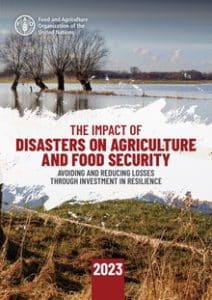
Interconnected Disaster Risks: Risk Tipping Points 2023 (UNU)
https://interconnectedrisks.org/download
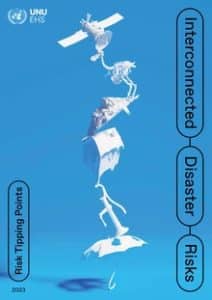
Least Developed Countries Report 2023: Crisis-resilient development finance
Report in English, Overview in English, French & Spanish: https://unctad.org/publication/least-developed-countries-report-2023
The United Nations Conference on Trade and Development (UNCTAD) emphasized on 7 November 2023 the imperative for international financial reforms to specifically target the financing requirements of the world’s 46 least developed countries (LDCs). According to UNCTAD’s Least Developed Countries Report 2023, fiscal constraints in LDCs pose a severe threat to their ability to implement crucial development policies, potentially derailing progress towards Sustainable Development Goals (SDGs) and a low-carbon transition. Failure to promptly address the financing needs of LDCs, warns the report, will hinder their development prospects and exacerbate the impact of climate change, especially since 17 out of the 20 countries most vulnerable to and least prepared for climate change are LDCs.

https://www.unep.org/resources/production-gap-report-2023
A major new report published on 8 November 2023 finds that governments plan to produce around 110% more fossil fuels in 2030 than would be consistent with limiting warming to 1.5°C, and 69% more than would be consistent with 2°C. This comes despite 151 national governments having pledged to achieve net-zero emissions and the latest forecasts which suggest global coal, oil, and gas demand will peak this decade, even without new policies. When combined, government plans would lead to an increase in global coal production until 2030, and in global oil and gas production until at least 2050, creating an ever-widening fossil fuel production gap over time.
Progress, good practices and lessons learned in prioritizing and incorporating gender-responsive adaptation action – Policy brief (UNFCCC)
https://unfccc.int/documents/632960

Promoting physical activity and healthy diets for healthy ageing in the WHO European Region
https://iris.who.int/handle/10665/373061
Lifestyle and medical advances that contribute to longevity are achievements to celebrate, but they have brought considerable and unintended social, economic and health challenges as life expectancy increases faster than life-years spent in good health. In this context, healthy ageing – defined by WHO as a process of developing and maintaining functional abilities to foster well-being in older adults – not only increases the welfare of older adults, but also directly influences health-care and long-term care costs. Although health status in older ages mainly is dependent on lifestyles determined during adulthood and youth, the level of physical activity and quality of diet in older age are also important determinants of health, well-being, functional ability, mobility and independence. For most older people, healthy ageing means much more than just the absence of diseases; it also represents the maintenance of good functional ability. This report advocates for investment in promoting healthy lifestyles in the older population to encourage active healthy ageing and increase healthy life expectancy. Inspiring examples of innovations in promoting physical activity and healthy diets from across the WHO European Region are presented to support implementation and scale-up of interventions by Member States.

https://www.unicef.org/reports/reaching-children-holistic-approach
Despite recent initiatives to better link social protection interventions and civil registration, significant gaps still exist in social protection coverage and birth registration rates, particularly among the most vulnerable and marginalized populations including refugees, internally displaced persons (IDPs) and those at risk of statelessness. This call to action is intended to support practitioners and policymakers working on both social protection and birth registration/Civil Registration and Vital Statistics (CRVS) systems to understand the importance of such linkages and how the synergies can be promoted with a win-win situation for both sectors.
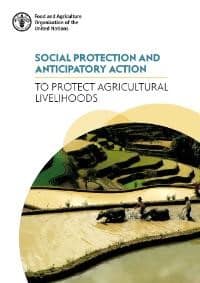
https://doi.org/10.4060/cc7628en
As the quality of climate risk information and scientific forecasting has continued to improve, the imperative to act in advance of an imminent shock in order to protect people, assets and livelihoods has also gained notable attention and increasing investment. Recognizing this opportunity, some governments, and development and humanitarian partners are trying to gain a better understanding of the potential of social protection to deliver support ahead of a forecasted shock, including exploring options to systematically integrate anticipatory action approaches within existing national social protection systems. As such, this document discusses the conceptual and practical linkages between these two topics alongside presenting four country case studies, thereby contributing to the literature on how social protection and anticipatory action can protect agricultural livelihoods.
The State of Food and Agriculture 2023: Revealing the true cost of food to transform agrifood systems (FAO)
English: https://www.fao.org/interactive/state-of-food-agriculture/en/
French: https://www.fao.org/publications/home/fao-flagship-publications/the-state-of-food-and-agriculture/fr
Spanish: https://www.fao.org/publications/home/fao-flagship-publications/the-state-of-food-and-agriculture/es

State of Global Water Resources 2022 (WMO)
https://public.wmo.int/en/our-mandate/water/state-of-global-water-resources-2022
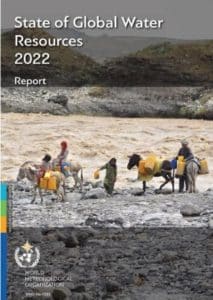
UNCCD Data Dashboard
https://data.unccd.int/
The UN Convention to Combat Desertification (UNCCD) has launched its first-ever Data Dashboard compiling national reporting figures from 126 countries, which shows that land degradation is advancing at an astonishing rate across all regions. Between 2015 and 2019, the world lost at least 100 million hectares of healthy and productive land each year, adding up to twice the size of Greenland. These statistics underscore the need for urgent action, as escalating land degradation continues to destabilize markets, communities, and ecosystems around the globe. The UNCCD Data Dashboard launch comes at a critical juncture as world leaders and experts will soon gather in Samarkand, Uzbekistan, from 13-17 November 2023 for the 21st session of the UNCCD Committee for the Review of the Implementation of the Convention (CRIC 21). Delegates will review global progress made toward land degradation neutrality (LDN) and confront pressing issues like enhancing drought resilience, promoting women’s land rights, and combating sand and dust storms.
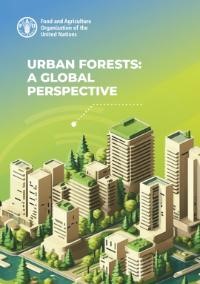
https://www.fao.org/documents/card/en/c/cc8216en
Urban forests, trees and green spaces play a pivotal role in enhancing the quality of urban life, but their benefits are still not equally accessible to all, according to a new report from the Food and Agriculture Organization of the United Nations (FAO). Launched on 16 October 2023 at the 2nd World Forum on Urban Forests in Washington DC, the report warns that action is needed to make urban greening more equitable in order to achieve global goals, particularly as cities face growing challenges due to climate change. It provides a region-by-region overview of the current state of urban forestry worldwide, and also includes case studies of how some cities and regions are investing in green infrastructure and solutions to achieve better outcomes for all residents in the face of global warming.
International Peace and Security
Concept note for the Security Council open debate on the theme “Peace through dialogue: the contribution of regional, subregional and bilateral arrangements to the prevention and peaceful resolution of disputes”
English, French & Spanish: https://undocs.org/S/2023/732
Brazil, in its capacity as President of the Security Council for the month of October 2023, held a high-level debate on the theme “Peace through dialogue: the contribution of regional, subregional and bilateral arrangements to the prevention and peaceful resolution of disputes”, on 20 October 2023. In order to guide the discussions on this topic, Brazil has prepared this concept note.
Concept note for the Security Council open debate on the theme “Women’s participation in international peace and security: from theory to practice”
English, French & Spanish: https://undocs.org/S/2023/733
Brazil, in its capacity as President of the Security Council for the month of October 2023, will convene a ministerial-level open debate on the theme “Women’s participation in international peace and security: from theory to practice”, in connection with the item entitled “Women and peace and security”, on 25 October 2023. In order to guide the discussions on this topic, Brazil has prepared a concept note.
Concept note for the Arria-formula meeting on the theme “Preventing and responding to conflict-related sexual violence”
English, French & Spanish: https://undocs.org/S/2023/779
The Permanent Mission of the Republic of Albania, the Permanent Mission of the United Kingdom of Great Britain and Northern Ireland and the United States Mission to the United Nations will organized an Arria-formula meeting on the theme “Preventing and responding to conflict -related sexual violence” on 18 October 2023. In order to guide the discussions on this topic this concept note was prepared.
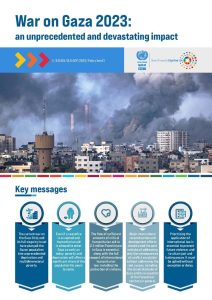
https://www.unescwa.org/publications/war-gaza-unprecedented-devastating-impact
The war on Gaza and its full siege by Israel have been unprecedented in the scale of death and destruction, with profound and devastating impacts on the lives of Palestinians. To date, more than 6,500 lives were lost, 40 per cent of which were children, which is more than triple the combined total of four previous escalations since 2008. Moreover, Israeli bombardment has fully destroyed or severely damaged 42 per cent of housing units. The United Nations Economic and Social Commission for Western Asia (ESCWA) has issued a policy brief to unpack the dire situation by looking at two of its critical aspects: the socioeconomic context of Gaza prior to the war, characterized by occupation, blockade and recurrent military escalations; and the immediate and long-term consequences of the war.
Women and peace and security: Report of the Secretary-General (S/2023/725, 28 September 2023)
English, French & Spanish: https://undocs.org/S/2023/725
More than 600 million women and girls lived in conflict-affected countries in 2022, a 50 per cent increase since 2017. Civilians around the world need greater humanitarian aid than ever before—but countries are instead increasing military spending, which topped USD 2.2 trillion in 2022. That is the picture painted by a new report by UN Secretary-General António Guterres on women, peace, and security which UN Women drafted on behalf of the UN system. The report was issued 23 years after Security Council resolution 1325, , which called for all parties to conflicts to ensure the safety of women and girls, and for women’s full involvement in peace processes.
see also: https://www.unwomen.org/en/news-stories/in-focus/2023/10/in-focus-the-women-peace-and-security-debate
Human Rights

https://www.ohchr.org/en/documents/country-reports/attack-funeral-reception-hroza
On 5 October, a missile struck a café in the small village of Hroza in eastern Ukraine, killing 59 people attending a funeral reception. It was, as we said at the time, one of the deadliest single incidents for civilians since February 2022. This report, published on 31 October 2023, concludes that there are reasonable grounds to believe that the missile was launched by Russian armed forces, and that there was no indication of military personnel or any other legitimate military targets at or adjacent to the café at the time of the attack. The report was based on information collected and verified by the Human Rights Monitoring Mission in Ukraine (HRMMU), who carried out two fact-finding missions to Hroza on 7 and 10 October. The site of the blast was inspected and 35 people interviewed, including local residents, witnesses, two survivors, medical staff and morgue employees.
DPPA-OHCHR Practice Note: Enhancing the quality and effectiveness of mediation efforts through human rights
https://www.ohchr.org/sites/default/files/documents/publications/DPPA-OHCHR-Joint-Practice-Note-20231101.pdf
“Foreword: As we commemorate the seventy-fifth anniversaries of the Universal Declaration of Human Rights and of United Nations Special Political Missions, we are honoured to present this practice note on mediation and human rights — a collaboration of the Department of Political and Peacebuilding Affairs and the Office of the United Nations High Commissioner for Human Rights. Peace without respect for human rights is incomplete and impossible, especially in a world facing multifaceted challenges. This practice note delves into practical strategies and real-world examples to help mediators and human rights practitioners weave human rights principles and considerations into their work in general and in every step of mediation efforts specifically. Human rights are the bedrock of a fair and just society, but at a more immediate level they also constitute a problem-solving tool. The note shows that human rights offer practical solutions to many of the challenging issues that mediators try to address. This joint effort illuminates the power and potential of dialogue and rights, and demonstrates that successful peacemaking embraces the fundamental rights of all parties involved, including those most marginalized. By integrating the mediation process with human rights considerations, we hope and aspire to increase the odds of reaching more inclusive and just peace agreements, which in turn, contribute to a more sustainable peace.
Mental health, human rights and legislation: guidance and practice
https://www.who.int/publications/i/item/9789240080737
Ahead of World Mental Health Day, the World Health Organization (WHO) and the Office of the High Commissioner on Human Rights (OHCHR) have jointly launched a new guidance to support countries to reform legislation in order to end human rights abuses and increase access to quality mental health care. Human rights abuses and coercive practices in mental health care, supported by existing legislation and policies, are still far too common. Involuntary hospitalization and treatment, unsanitary living conditions and physical, psychological, and emotional abuse characterize many mental health services across the world. While many countries have sought to reform their laws, policies and services since the adoption of the United Nations Convention on the Rights of Persons with Disabilities in 2006, too few have adopted or amended the relevant laws and policies on the scale needed to end abuses and promote human rights in mental health care.
OHCHR Technical Note on the Human Rights of Intersex People: Human Rights Standards and Good
https://www.ohchr.org/sites/default/files/2023-11/ohchr-technical-note-rights-intersex-people.pdf
2023 OHCHR technical note that provides an overview of the international human rights norms and standards and relevant recommendations of United Nations human rights mechanisms and good practices by States in relation to the human rights of intersex people. This includes extracts of outputs of United Nations human rights mechanisms, including Treaty Bodies, Special Procedures and OHCHR. This technical note is a resource for States and other stakeholders to support alignment between national legislation and international human rights norms and standards.
Parliaments and Human Rights: A self-assessment toolkit
English, French & Spanish: https://www.ohchr.org/en/publications/policy-and-methodological-publications/parliaments-and-human-rights-self-assessment
The Inter-Parliamentary Union (IPU) and the UN Human Rights Office launched a toolkit on 11 October 2023 to help Parliaments better integrate human rights into their work. The toolkit provides a practical introduction to assessing how human rights can be better mainstreamed into Parliamentary processes and structures. The toolkit is designed to empower Parliamentarians as champions of human rights for their constituents.
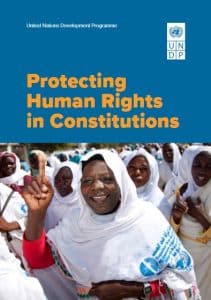
https://www.undp.org/publications/protecting-human-rights-constitutions
Protecting Human Rights in Constitutions is a guidebook that delivers practical and accessible advice for securing human rights in constitutions. It identifies the rights one would expect to find in a democratic society which complies with international human rights norms and standards; describes the scope of each right and the different protections it seeks to afford; and provides examples of the way the right has been translated into different constitutions, as well as references to the international treaties and standards that enunciate the right. In this way, it is designed to develop the capacity of UNDP staff, other international constitutional assistance providers, and national partners engaged in constitution-drafting processes to promote the effective inclusion of human rights in constitutions. This guidebook contributes to, and complements, the support that UNDP provides to a range of national partners and stakeholders in writing or amending their constitutions. It also complements UNDP’s larger efforts in achieving lasting peace and sustainable development, and in contributing to establish a culture of respect for the rule of law, as well as in embedding human rights principles in UNDP’s work to build integrated and sustainable solutions for people and planet.
Taking Stock: Sexual and Reproductive and Health and Rights in Climate Commitments: A Global Review (UNFPA)
https://www.unfpa.org/publications/taking-stock-sexual-and-reproductive-and-health-and-rights-climate-commitments-global

Together for prevention: Handbook on multisectoral national action plans to prevent violence against women and girls (UN Women)
https://www.unwomen.org/en/digital-library/publications/2023/10/together-for-prevention-handbook-on-multisectoral-national-action-plans-to-prevent-violence-against-women-and-girls
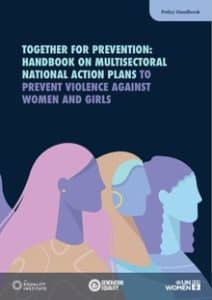
Humanitarian Affairs
2023 Global Survey Report on Persons with Disabilities and Disasters (UNDRR)
https://www.undrr.org/report/2023-gobal-survey-report-on-persons-with-disabilities-and-disasters

Empowering Migrants and Communities: Private Sector Engagement for Inclusive Sustainable Development (UNDP)
https://www.undp.org/publications/empowering-migrants-and-communities-private-sector-engagement-inclusive-sustainable-development
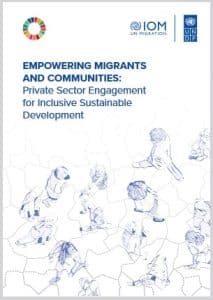
Post-Disaster Needs Assessment: 2023 Kakhovka Dam Disaster, Ukraine
https://ukraine.un.org/en/248860-post-disaster-needs-assessment-report-kakhovka-dam-disaster

Rapid Environmental Assessment of Kakhovka Dam Breach Ukraine, 2023 (UNEP)
https://www.unep.org/resources/report/rapid-environmental-assessment-kakhovka-dam-breach-ukraine-2023
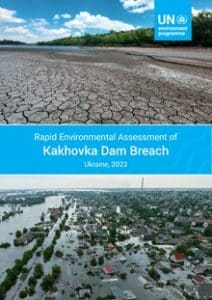
Justice and International Law
Guidance Note of the Secretary General: Transitional Justice – A Strategic Tool for People, Prevention and Peace
https://www.ohchr.org/en/documents/tools-and-resources/guidance-note-secretary-general-transitional-justice-strategic-tool

Drug Control, Crime Prevention and Counter-terrorism
Afghanistan opium survey 2023 (UNODC Research Brief, August 2023)
https://www.unodc.org/documents/crop-monitoring/Afghanistan/Afghanistan_opium_survey_2023.pdf
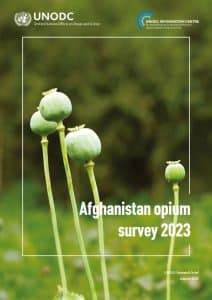
Newsletter Archive: https://unric.org/en/unric-info-point-library-newsletter-archive

